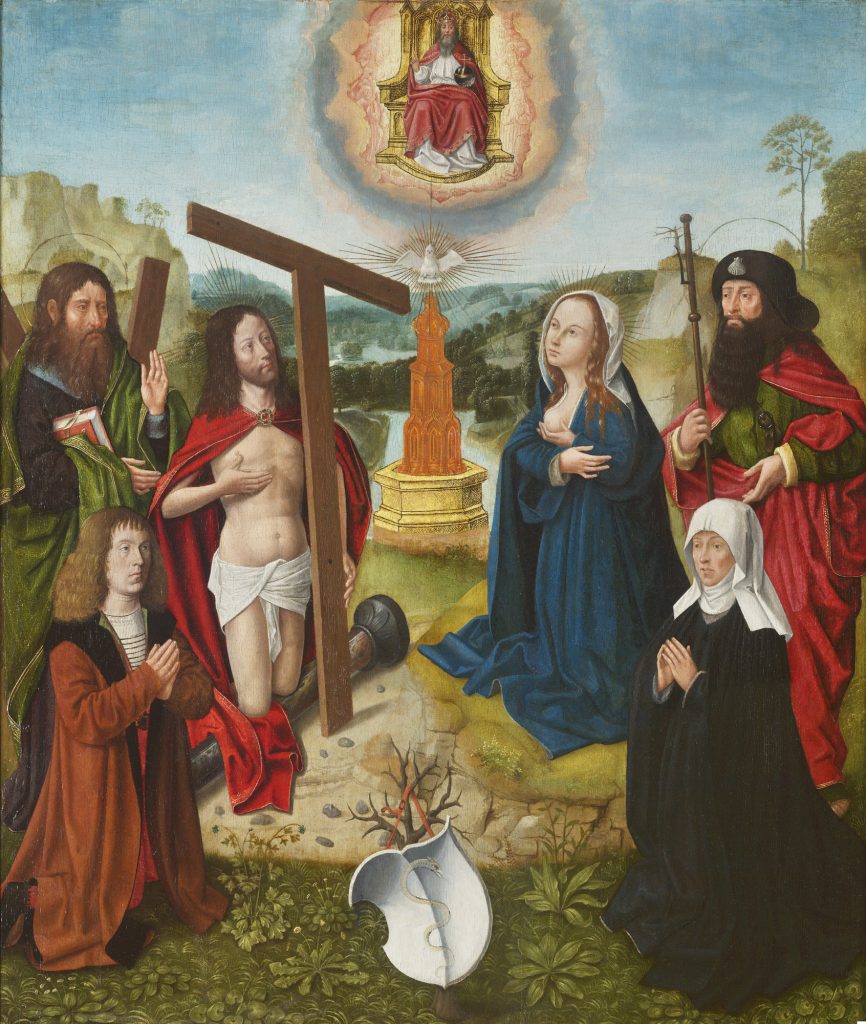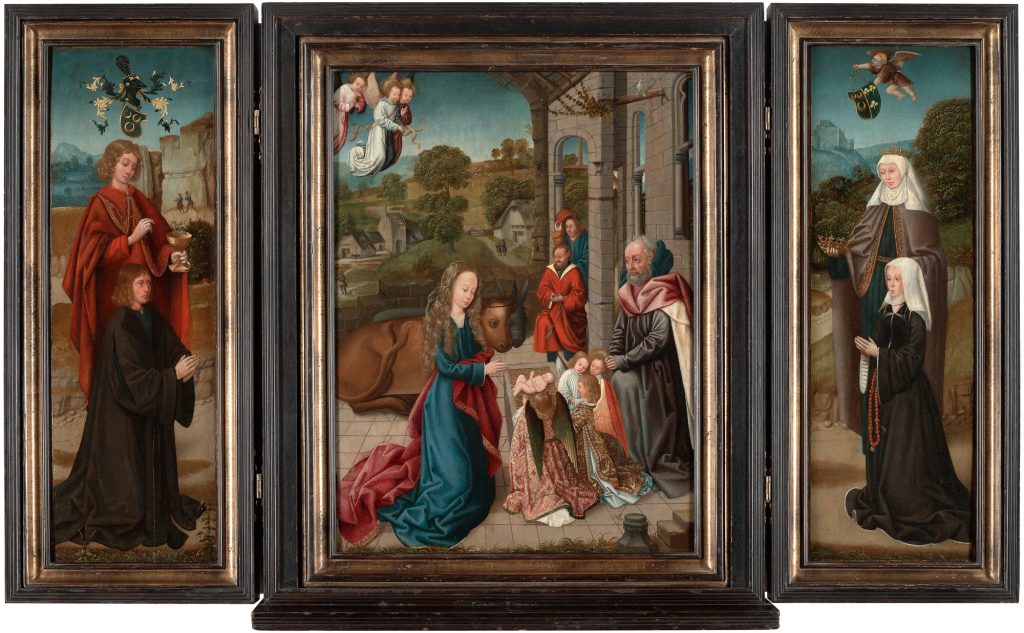Flemish School
The Crucifixion
17th century
46.8x33.3cm, oil on panel
Indistinctly signed with monogram 'JHF (?)' (lower centre)
The Flemish School, also known as the Northern Renaissance, the Primitive Flemish School and the Early Dutch School, refers to artists active in Flanders during the 15th and 16th centuries, particularly in the the cities of Bruges and Ghent. The three most prominent painters of the period – Jan van Eyck, Robert Campin and Rogier van der Weyden – are known to have made significant strides in illusionism, or the realistic and accurate depiction of people, spaces and objects. The Flemish School’s favorite subjects were often religious in nature, but small portraits were also popular. The majority of these works are in the form of plates, simple altars or more complex altars, often in diploid or polyploid form.
During the 15th and 16th centuries, the Netherlands became a political and artistic center centered around the cities of Bruges and Ghent. The Flemish school arose almost at the same time as the Italian Renaissance. However, while the Italian Renaissance was based on a rediscovery of classical Greek and Roman culture, the Vlaanderen school drew influence from the region’s Gothic past. These artists also experimented with oil painting earlier than their Italian Renaissance counterparts.
Provenance:
Private collection, Zürich, Switzerland




